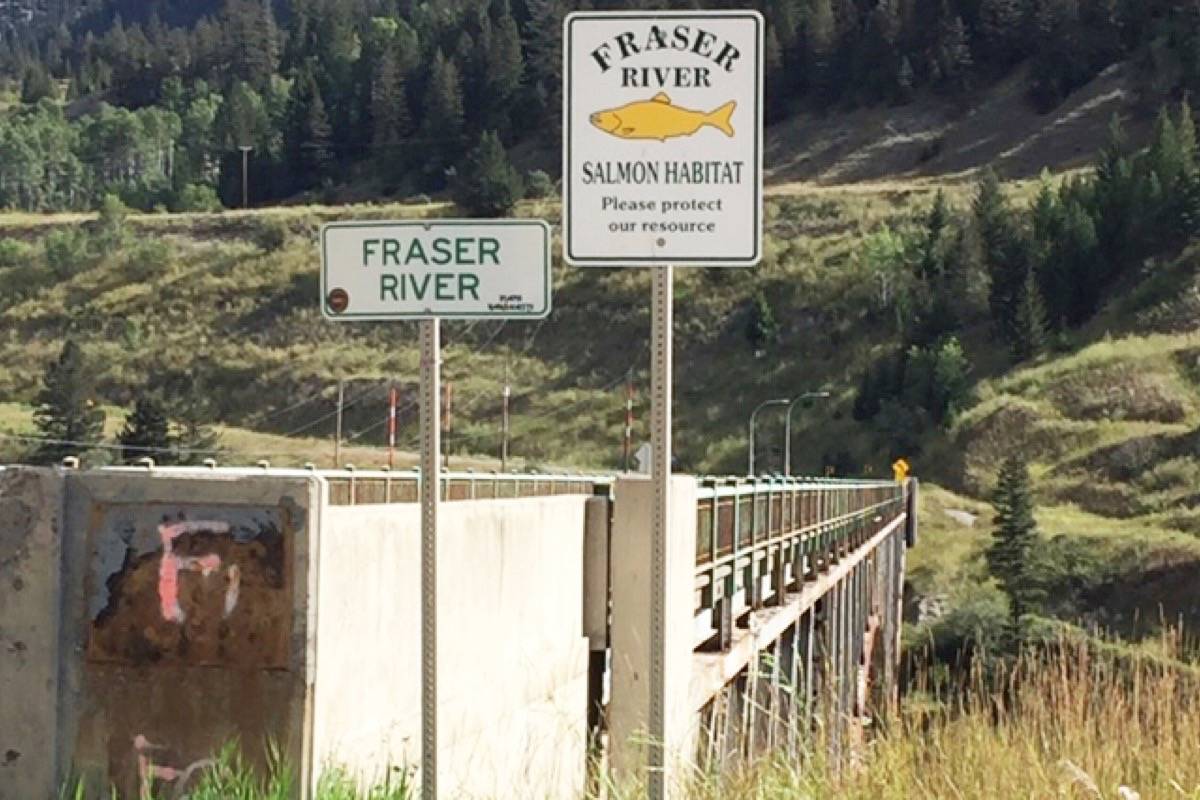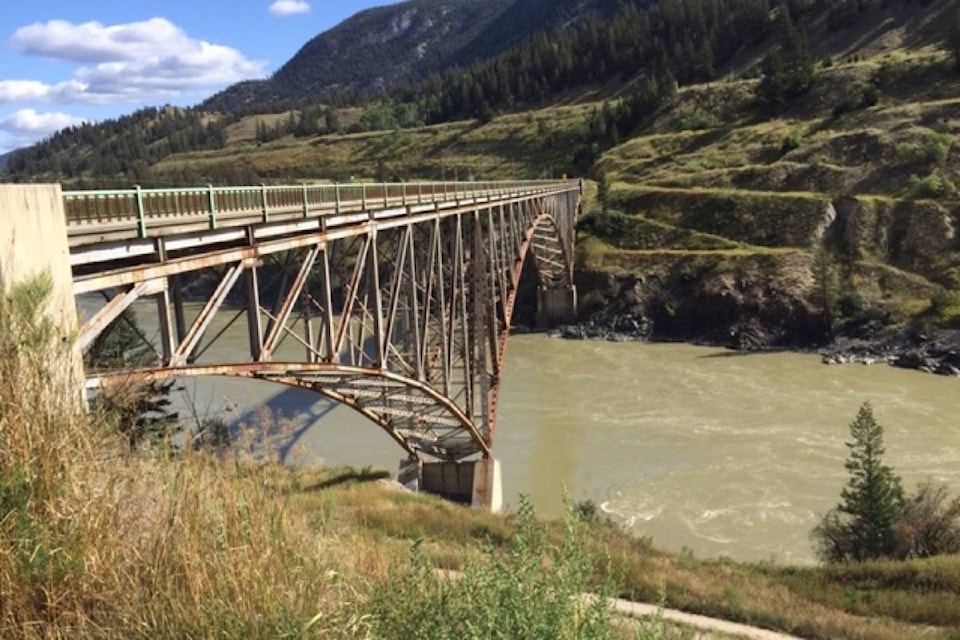… You don’t know what you’ve got ‘til it’s gone. – Joni Mitchell
By Jack Emberly
For months, the Big Bar Landslide has blocked fish migration on the Fraser River, the largest producer of sockeye in the world. Two-third of the salmon spawn above the blockage in the Chilcotin and Prince George areas.
Former Maple Ridge resident, and Alouette River Management Society president, Geoff Clayton, used to live in Williams Lake in the 1950s.
I updated him on the current situation after visiting the area in late August. There are no gill nets on the Fraser, no dip nets, I told Clayton.
“The T’silhqot‘in stopped fishing. Spawners on the Chilko River are 200 sockeye and 26 chinook, normally, 500,000,” according to the T’silhqot‘in band website.
On July 27, in Lillooet, the Unified Incident Command Team – formed to get salmon upstream – reported that 400,000 fish were downstream of the slide, unable to get upstream.
Also, on July 27, Fisheries and Oceans Canada said they had not detected any fish past the slide.
“It’s another nail in the coffin of wild Fraser River salmon,” Clayton said.
“In the 1940s to 1960s, the Fraser, Chilcotin, Chilco, Quesnel and Horsefly rivers had amazing runs. Dip nets and drying racks loaded. Chilcotin returns were celebrated more than Christmas,” Clayton said.
Today, streamkeepers like Don Willimont scramble for brood stock for the Spruce City Wildlife Association hatchery in Prince George. Willimont says declines warranted “an aggressive hatchery program five years ago, but Fisheries and Oceans Canada wants more studies before granting permits.
“In B.C., we want to study declines, not act on them. We should manage to clear objectives. How many fish (do) we actually want?” Willimont said.
In an Aug. 21 video, Willimont describes a “disheartening” search for brood stock in five sample streams.
It’s been shared 726 times and viewed more than 50,000 times.
“In 2014, those streams had 4,956 spawners, (which at that time was) a conservation risk,” said Willimont in Prince George.
“Years ago, it would be tens of thousands. They say they’ve moved fish over the rockslide – 18,000 sockeye as of yesterday, and 6,000 chinook. So far, we’ve seen 16 (in Prince George),” Willamont said.
“We’re trying to get a female and a male to get the eggs and the milt to the hatchery. There’ll be no run when these fish come back. This is a giant mess.”
According to the DFO’s Catalogue of Salmon Streams and Spawn Escapements for the Prince George subdistrict, the Driftwood River had 45,000 to 129,490 sockeye in 1973.
The Stellako River had 100,000 sockeye each in 1949, 1954, and 1958. Small streams like O’ne’ell Creek averaged 15,000 to 35,000 with 100,000 in 1949.
On Sept. 5, I shared the numbers with Willimont.
“They’ve been going down a long time, but we don’t do anything. There’s something wrong with the management model. The Nechako is a bust – five chinook males and one spawned out female. We got 10,000 eggs from two of the three females from the Endako, that’s one fish five years from now. We don’t have eggs for the Bowron. So, the best we can do is teach people about salmon life cycle.”
At the Big Bar Slide, there are daily updates of the numbers of salmon that have moved upstream by helicopter and truck, and through moving the rocks. “We’re talking 90,000 fish,” said Willimont in early September.
“What about the 700,000 they didn’t get over, and (the) one million pink waiting?
“One chinook taken over the slide, swam back down three times. Imagine the energy expended. All that is spin doctoring,” Willimont said.
He questions the actions taken, asking why would you not inspect major river confluences once a month
The slide was reported in June, but DFO photos show it occurred in November. Could regular inspections have detected it? Could a plan have been made and strategies implemented before salmon arrived?
During an Aug. 5 media briefing, Fisheries Minister Jonathan Wilkinson said, “we don’t necessarily go up and down the river every six months doing inspections.”
Why not?
Quick action was vital. Yet, on July 5, the Unified Incident Command Team was wondering what to do. The options being considered were, take no action; remove or remediate the obstruction; or, physically move fish upstream.
On Sept. 15, the media update said: “The overall experience has been challenging, yet gratifying. The incident command structure will be a template for future responses.” It estimated then that the total number of fish past the landslide at 181,500.
The same day, the Spruce City Wildlife Association gave their update: “good news just came in – two female chinook have been captured in the Upper Nechako.”
On, Tuesday, Sept. 17., Willamont said that means 4,000 eggs from the Nechako and 10,900 eggs from the Endako were available for hatchery purposes.
“We’re happy to have any. The narrative here hasn’t changed. I think our numbers are 100 per cent representative of all the streams here,” Willamont said.
“A good portion of those fish that moved move up, died before they got to their spawning bed. We need a panel discussion after this is all over. What objectives were the DFO managing … before the crisis, during, and after it? We have multiple streams meeting risk levels. They need to speak to that.”

